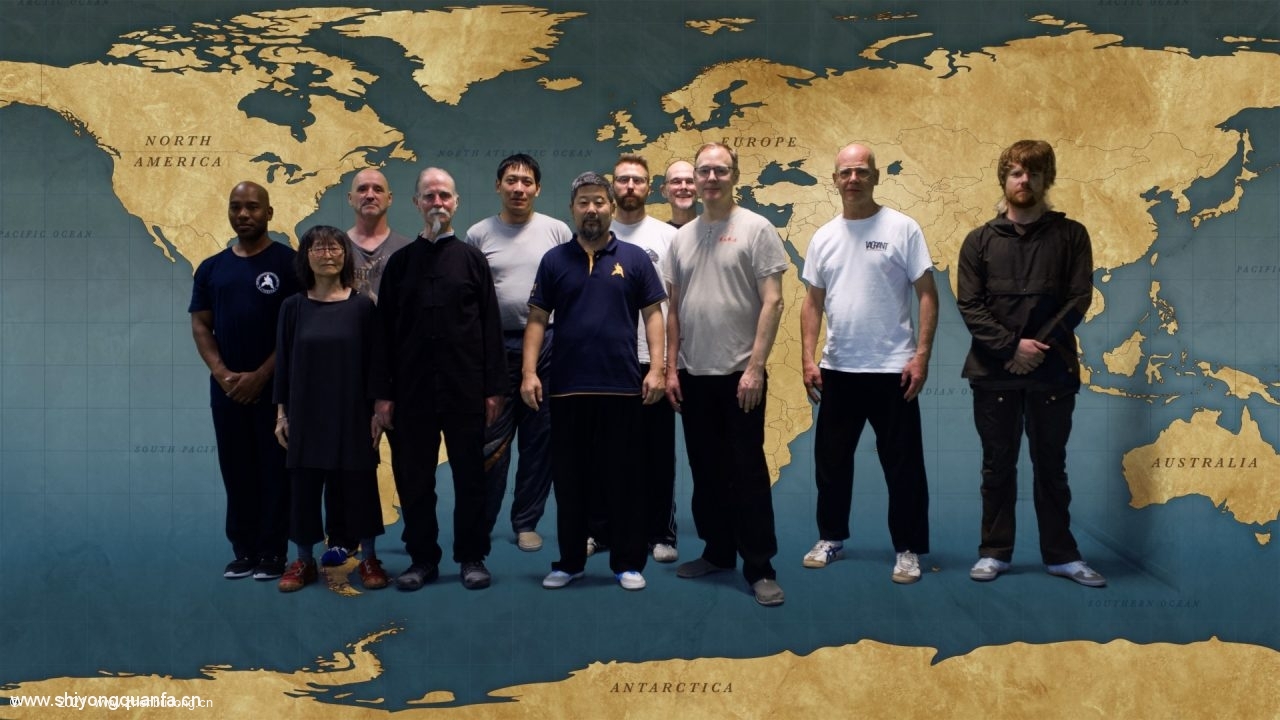
埃德蒙顿2019.09.14讲座合影
Positive circle steps. There are two steps and one modification. They are in, turn and out.
- In with elbow. The forearm locks into one piece. No movement is allowed. Everything must be passive.
The forearm comes in as a result of the bicep pulling it. It is a good idea to use the other hand to help pull the bicep in.
This causes the forearm to come in. In this way, the forearm does not have any action or energy in it. It is totally passive.
Then, turn the bicep. You can only cause of very small rotation of the bicep at this point of training. However, this action should not cause any tension or movement of the forearm. - Turn with Waist (at this stage it is the kua now).
- Out with Hand (at this stage the hand leads but the rear foot pushes)
Exercises:
- Extension
- Static Matching
- Dynamic Matching: direction, extension(length), and power
- Various Dynamic Matching exercises.
 The use of the elbow to pull the forearm back starts a new technique or new ability for the body. Our body use to have five designated parts to lead (outwards) the body in movements. Now we are adding the ELBOW as another one. This fundamentally changes the way the body works. Originally the elbow was only designed to move sideways. Now we want it to move in a straight line in accordance with the dantian, hand and opponent line.
The use of the elbow to pull the forearm back starts a new technique or new ability for the body. Our body use to have five designated parts to lead (outwards) the body in movements. Now we are adding the ELBOW as another one. This fundamentally changes the way the body works. Originally the elbow was only designed to move sideways. Now we want it to move in a straight line in accordance with the dantian, hand and opponent line.
This is Level Two Lead, Level One being the naturally born ability to have the five Heads lead (two hands, two feet and head).
In Level Three Lead, any part of the body can lead. In Taiji terms, this ability is called “Every Part of the Body is a Fist”.
In the afternoon, we practiced several exercised for the concept of De-synchronized synchronization.
2019.09.15
在喝水屋吃午餐。Roy Coucher 买给买午餐。
- 我们的大脑会把不同的点连在一起,认为有一条线。 这就是我们说的“幻觉”。我们说生活在这样一个幻觉中的。
- 讲解只有一个劲, 一个方向,但可以把推转换成拉。
- Rion Swanson 完成了一个力的转换。1. 左转身倒碓的收肘。2. 左转身倒碓的上步。
更多帖子
- 讲解齿轮箱第一步 (强烈推荐)
- 高山仰止 景行行止—记陈中华老师的首期国内实用拳法培训班 (强烈推荐)
- 2012年11月30巴西讲座 (强烈推荐)
- 大青山国际太极学院冬训营 (强烈推荐)
 :18963387833
:18963387833